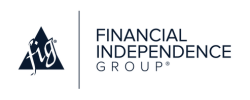Updated March 20, 2025, at 3:55 PM
In today’s crowded financial services landscape, standing out from the competition requires more than providing excellent advice. Clients seek more personalized, tailored experiences demonstrating a deep understanding of their needs, goals, and challenges. For independent financial professionals, personalization isn’t just a buzzword—it’s an essential strategy to build lasting relationships and foster trust.
What’s Personalization in Financial Marketing?
At its core, personalization in marketing is about delivering relevant, individualized content and services to your clients based on their unique needs and preferences. In the financial services industry, this could mean crafting bespoke investment strategies, sending customized reports, or even tailoring communication styles to fit each client’s personality.
But what does this mean in practical terms for independent advisors? Personalization could be as simple as addressing clients by name in emails or as complex as using data analytics to tailor retirement plans based on life stages, income brackets, or long-term goals. It’s all about making each client feel like they’re your only client, enhancing their overall experience and satisfaction.
Why Personalization Builds Trust
Trust is the cornerstone of any successful client-advisor relationship. When clients feel understood and valued, they’re far more likely to remain loyal and refer others to your practice. Personalization plays a critical role in fostering that trust.
Tailored experiences help clients see that their advisor isn’t just offering cookie-cutter solutions but is genuinely invested in their financial well-being. For example, implementing a financial strategy based on a client’s specific retirement goals or risk tolerance is far more likely to inspire confidence than pushing the same product or strategy to everyone.
Personalized interactions show clients you’re paying attention to their evolving needs. By proactively adjusting your recommendations based on life events, market changes, or even shifts in a client’s personal values, you demonstrate a level of care that fosters deeper trust.
Tools and Technologies for Personalized Marketing
So, how can financial advisors implement personalization at scale? Technological advances have made it easier than ever to deliver tailored experiences without spending countless hours on each client.
- Customer relationship management (CRM) systems: CRMs are invaluable for tracking client information, interactions, and preferences. They allow you to segment your client base, track important milestones (like birthdays or retirement dates), and automate personalized follow-up messages.
- Data analytics: Understanding client behavior and preferences through data analytics can help you anticipate their needs and provide more targeted services. For example, if you notice that a segment of clients tends to ask about estate planning as they approach a certain age, you can proactively send them content or offers related to that topic.
- Marketing automation: Marketing automation platforms enable you to send personalized emails, newsletters, or social media content based on specific client actions or milestones. This saves you time and ensures that your communication feels relevant and timely.
Implementing these tools allows you to scale your personalized efforts without losing the personal touch. From automated birthday greetings to customized portfolio reviews, you can maintain a high level of service without overwhelming your calendar.
Best Practices for Personalizing Client Interactions
While the tools above can help you implement personalized marketing, the key to success is understanding how to use them effectively. Here are some best practices for personalizing client interactions:
- Segment your client base: Only some clients need the same communication or services. You can tailor your messaging and recommendations more effectively by segmenting your client base based on factors like age, income, or investment goals. For example, younger clients might benefit more from educational content on saving for a first home, while older clients may prefer guidance on estate planning.
- Craft targeted email campaigns: Gone are the days of generic email blasts. Today, email marketing should be customized based on client preferences, life stages, and past interactions. For instance, if a client has recently expressed interest in tax-efficient investment strategies, you can send them personalized content related to tax planning.
- Personalize follow-ups and financial reports: Clients want to feel like you’re keeping an eye on their individual progress, not just delivering boilerplate reports. Consider customizing financial reports to reflect each client’s unique financial goals or following up after a meeting with specific next steps tailored to their situation.
- Offer personalized services: Beyond communication, personalization should also extend to the services you offer. Whether it’s creating custom retirement plans, adjusting investment strategies based on market changes, or offering flexible meeting options, the more you can tailor your services to meet client needs, the stronger your relationships will become.
Start Crafting a More Personalized Client Experience
In financial planning, trust is everything. Personalization offers a powerful way to build and maintain that trust, showing your clients that you understand their unique needs and are dedicated to helping them succeed.
By leveraging the right tools, technologies, and strategies, you can create more meaningful client experiences that drive loyalty and long-term growth.
Ready to start building more personalized client experiences? Work with our team of marketing experts to take your communications, services, and marketing efforts to the next level and foster deeper relationships that help your clients feel truly valued.


